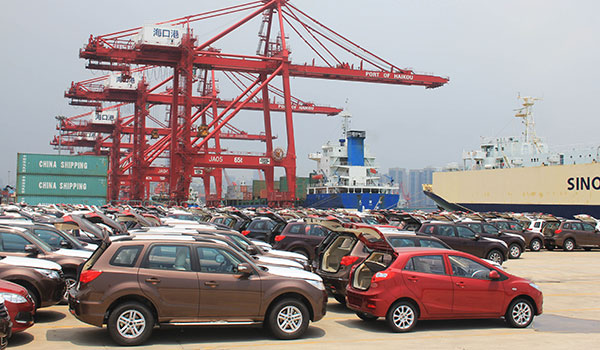Domestic market sheds stagnation
By Li Fangfang (China Daily) Updated: 2014-01-20 07:05
KPMG finds local brands in position to gain in the near future
Given its reported double-digit recovery in 2013 after two years of stagnation, China's auto market remains the most promising in the world, according to renowned consultancy KPMG.
The company predicts sales by China's automakers are set to account for one-third worldwide by 2020 thanks to constantly increasing investment in the sector.
According to KPMG's recently released 15th annual Global Automotive Executive Survey, sales are expected to surge in BRIC countries - Brazil, Russia, India and China, particularly in China.
And 10 out of the top 20 automakers that are expected to gain a larger market share in the next five years are from China, the survey found.
"Chinese auto consumers have high expectations and are increasingly keen to have more options in their vehicles, a wide variety of products to choose from and good service from enhanced dealer networks," said Andrew Thomson, a partner at KPMG China specializing in the automotive industry throughout the Asia-Pacific region and China.
"China offers a relative 'greenfield' environment to exploit a wide range of opportunities for auto manufacturers."
In 2013, China sold nearly 22 million vehicles, an annual increase of roughly 14 percent, maintaining its top position in the global market, according to the China Association of Automobile Manufacturers.
Sales of passenger vehicles alone jumped 15.7 per cent to nearly 18 million units.
Top priority
Additionally, Chinese survey respondents among 200 executives representing automakers, suppliers, dealers, financial service providers, rental companies and mobility service providers in 28 countries, ranked urban vehicle design as their top priority.
"The phenomenal expansion of cities in China is putting pressure on infrastructure, and our prediction is that there will be greater demand for solutions, such as improved connectivity, lightweight materials, alternative powertrains and even, eventually, self-driving cars to avoid congestion and pollution," Thomson said.
The report noted that an increasing proportion of automobiles produced by BRIC automakers are aimed at export markets.
Forty-four percent of respondents - doubled from previous year - said they are confident that China will export more than 2 million cars in two years, faster than previously expected.
However, statistics from CAAM show that in 2013, China exported 977,300 vehicles, a drop of 7.5 percent from 2012.
Passenger vehicle exports totaled 596,300 units, down 9.8 percent.
- NHTSA says finds no 'defect trend' in Tesla Model S sedans
- WTO rare earth ruling is unfair
- Amway says 2014 China sales may grow 8%
- President Xi in Europe: Forging deals, boosting business
- CNOOC releases 2013 sustainability report
- Local production by Chery Jaguar Land Rover this year
- Car lovers test their need for speed in BMW Mission 3
- China stocks close mixed Monday


















